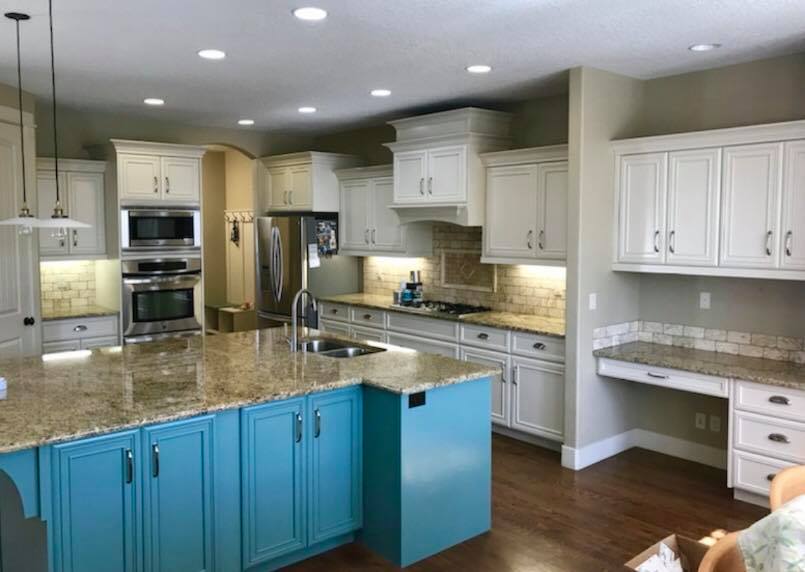
Cabinet refinishing is an excellent way to give your kitchen or bathroom a fresh and updated look without the need for a complete cabinet replacement. Refinishing involves restoring the existing cabinets by removing the old finish, applying a new finish, and making any necessary repairs or upgrades. Here are the steps involved in cabinet refinishing:
- Evaluate the cabinets: Assess the condition of your cabinets to determine if they are suitable for refinishing. Check for any structural damage, water damage, or excessive wear. Ensure that the cabinet material is suitable for refinishing and that the existing finish can be properly removed.
- Plan the refinishing process: Decide on the desired look for your cabinets. This includes choosing the new finish, such as paint or stain, as well as any additional details like hardware or decorative accents. Consider the overall style and color scheme of your kitchen or bathroom to ensure a cohesive and aesthetically pleasing result.
- Prepare the cabinets: Remove all cabinet doors, drawers, and hardware. Clean the surfaces thoroughly to remove dirt, grease, and grime. Fill any dents, scratches, or holes with wood filler, and sand the surfaces to create a smooth and even base for the new finish. Proper surface preparation is crucial for achieving a professional-looking outcome.
- Apply the new finish: Depending on your chosen finish, you can either paint or stain the cabinets. If painting, apply a primer first to ensure proper adhesion and better coverage. Then, apply multiple coats of paint, allowing sufficient drying time between each coat. If staining, apply the stain evenly and wipe off any excess for a consistent color. Consider adding a protective clear coat to enhance durability and provide a polished finish.
- Upgrade hardware and accessories: As part of the refinishing process, consider updating the cabinet hardware, such as handles, knobs, or hinges. New hardware can significantly enhance the overall appearance and complement the updated finish. Additionally, consider adding decorative elements like crown molding or trim to further enhance the cabinet’s aesthetics.
- Reassemble and reinstall: Once the cabinets and doors have fully dried, reassemble the components and reinstall them in their original locations. Ensure that all hinges, knobs, and other hardware are properly attached and aligned. Take care to handle the cabinets with caution to avoid damaging the newly finished surfaces.
Cabinet refinishing offers several benefits, including cost savings, reduced downtime, and the ability to customize the look of your cabinets. However, it’s important to note that refinishing is best suited for cabinets in good structural condition. If your cabinets have significant damage or require extensive repairs, it may be more practical to consider cabinet replacement.
If you’re unsure about the refinishing process or if you have complex cabinetry, it’s advisable to consult with a professional cabinet refinishing service. They have the expertise, tools, and experience to ensure a smooth and successful refinishing project, resulting in updated and beautiful cabinets that transform the look of your space.